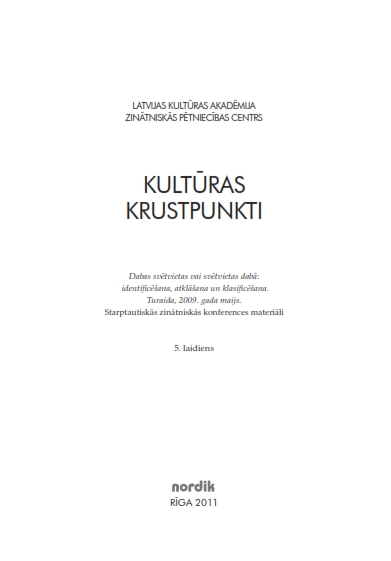The Roots ‘God’ and ‘Holy’ in Latvian Toponymy
The Roots ‘God’ and ‘Holy’ in Latvian Toponymy
Author(s): Laimute BalodeSubject(s): Cultural history, Lexis, Semantics, Historical Linguistics, 18th Century
Published by: Latvijas Kultūras akadēmija
Keywords: Latvia; toponyms; names of places; God; holy; hydronyms; oikonyms; oronyms; river names;
Summary/Abstract: The article provides a short review of Latvian toponyms deriving from the root Dievs ‘God’ and svēts ‘holy’. The name ‘God’ (Latv. Dievs) is quite infrequent among Latvian place-names: altogether there are about 70 place-names mentioned in the ‘Dictionary of Latvian Place-Names’, among them around 10 hydronyms. If we compare this with Latvian hydronyms derived from the root Velns ‘Devil’, we see that Veln- toponyms are much more common – about 2000 Latvian place-names. Most instances of the root Dievs are recorded in microtoponyms (about 26), hydronyms (10), oikonyms (10) and oronyms (6). Approximately the same number of place-names with this root have been recorded in Lithuania. Altogether, Latvian toponyms with the root svēts ‘holy’ constitute about 200 items in the card index, most being names of hills (about 30), springs (about 20), the water of which was thought to be curative, as well as several rivernames (about 20), lake-names (about 15) and names of holy trees (about 30 altogether – the largest proportion being oak and lime trees). Most of this material comes from the card index of the Latvian Language Institute and is relatively new: the most ancient records of place-names with the root ‘God’ and ‘holy’ are from the 18th century.
Journal: Culture Crossroads
- Issue Year: 5/2011
- Issue No: 1
- Page Range: 25-33
- Page Count: 9
- Language: English

